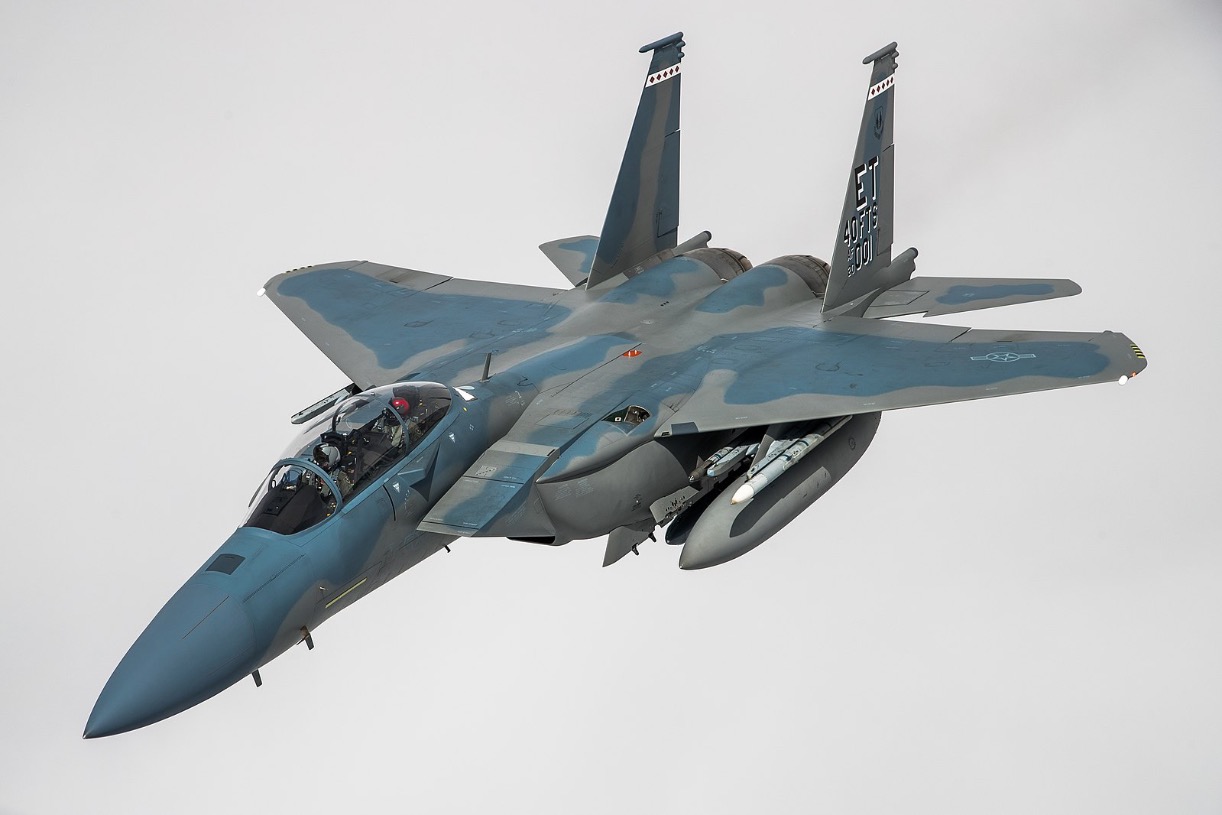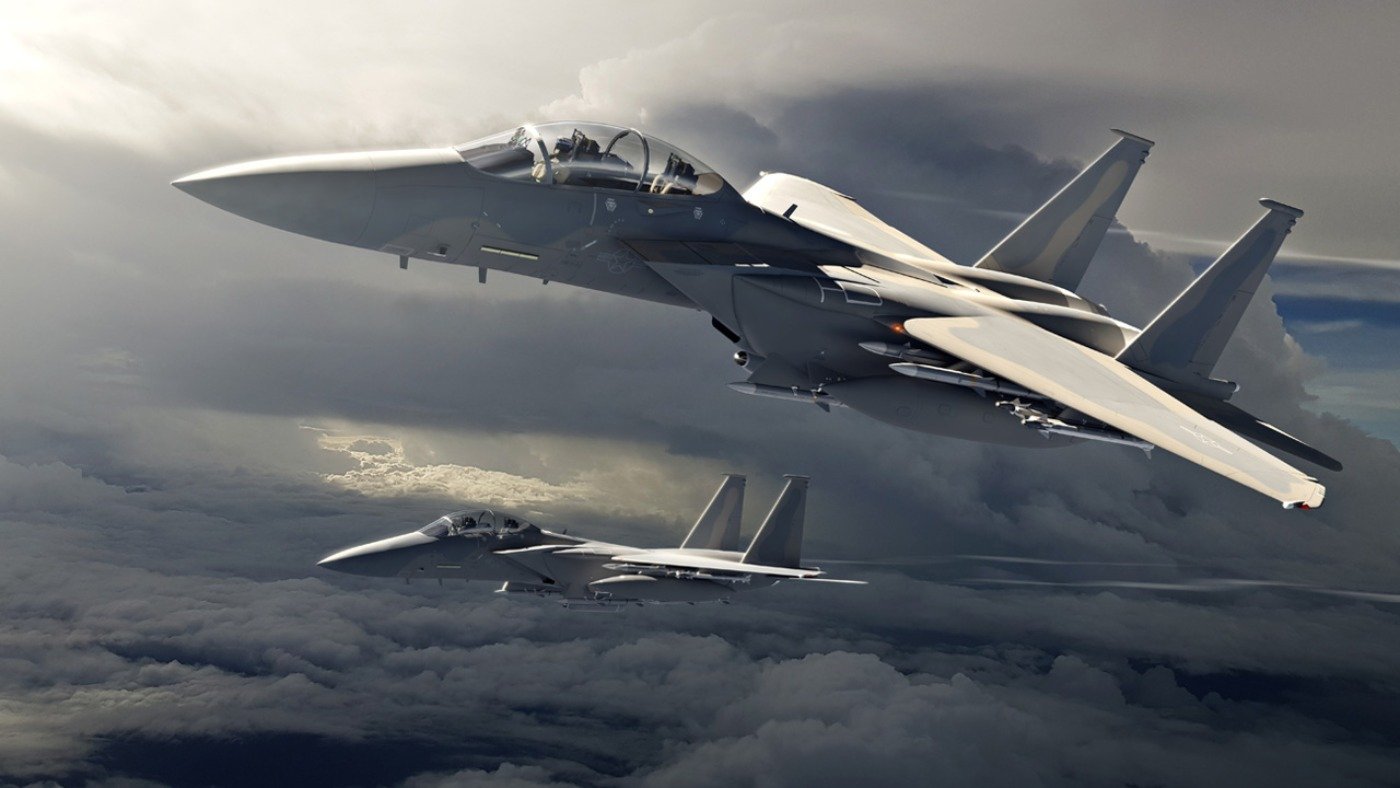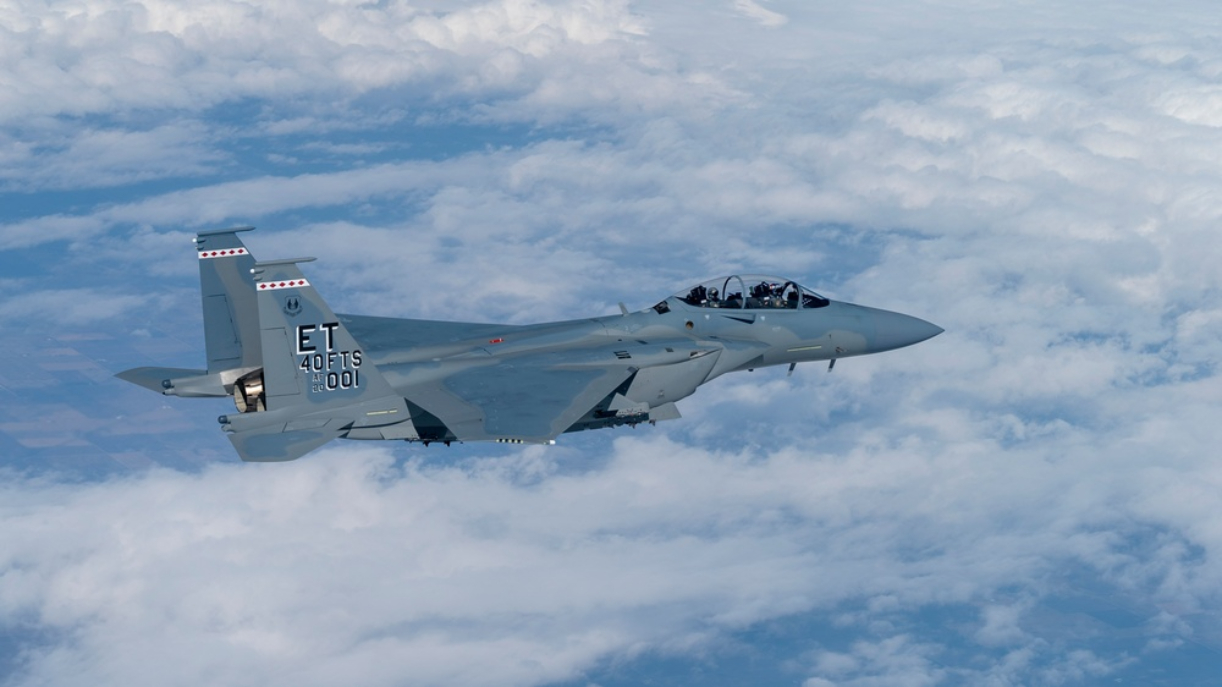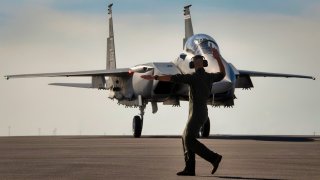Is Congress Forcing the F-15EX Fighter on the U.S. Air Force?
Congress is pushing the U.S. Air Force to purchase more F-15EX Eagle II fighter jets and keep the production line open longer amid rising tensions with China. A proposal in the 2025 National Defense Authorization Act (NDAA) aims to increase the Air Force's fleet to 122 F-15EXs, more than the current target of 98 but still short of the original goal of 144.
Summary: Congress is pushing the U.S. Air Force to purchase more F-15EX Eagle II fighter jets and keep the production line open longer amid rising tensions with China. A proposal in the 2025 National Defense Authorization Act (NDAA) aims to increase the Air Force's fleet to 122 F-15EXs, more than the current target of 98 but still short of the original goal of 144.

-The move reflects lawmakers' belief in the F-15EX's potential and aims to avoid issues faced with the prematurely closed F-22 Raptor production line.
-The F-15EX, capable of Mach 2.5 speeds and carrying 30,000 pounds of munitions, offers versatile capabilities for both near-peer and less advanced conflicts. While not a fifth-generation aircraft, it complements the F-35 and F-22 by handling various missions and freeing up these advanced jets for critical tasks. Congress's intervention underscores the importance of maintaining robust and adaptable air capabilities in an era of global competition.
Congress is forcing the Air Force to buy more F-15EX Eagle II fighter jets and keep the aircraft’s production line open for longer as tensions with China continue to rise.
A recent proposal to the 2025 National Defense Authorization Act (NDAA) – the military budget – seeks to force the Air Force to buy more F-15EX Eagle II fighter jets and prevent the production line from closing too early.
Congress’ move suggests that the lawmakers see a lot of potential in the F-15EX Eagle II and don’t want to limit options for the Air Force down the line. Congress is likely trying to prevent what happened with the F-22 Raptor stealth fighter jet, which had its production line close too soon with the result of having extreme difficulties keeping an operational F-22 fleet.
With the new proposed amendment to the NDAA, the Air Force would end up having a total of 122 F-15EX Eagle II fighter jets, which is still fewer than the initial goal of 144 aircraft but more than the current target of 98 aircraft.
Indeed, the F-15EX Eagle II looks like is here to stay and play an important role in the Air Force’s deterrence capabilities. As the overall U.S. military enters a phase of increased competition across the globe, aircraft like the F-15EX Eagle II with versatile capabilities that can prove useful in both near-peer warfare and against less advanced adversaries are invaluable.

Congress understands that and is looking to safeguard the F-15EX Eagle II capability well into the future by ensuring that the Air Force buys an adequate number of aircraft. Although it might sound strange that Congress, which is the approver of military funds, is forcing the Air Force to spend more money on a capability, this is the way the American democracy works, and it generally works well because Congress has a better view of long-term threats than the Air Force, which is focused on its own turf.
THE F-15EX EAGLE II
The F-15EX Eagle II is truly a beast in the air. It can hit speeds of up to Mach 2.5 (close to 2,800 miles per hour) while carrying around 30,000 pounds of munitions. It has an operational range of 2,000 miles without refueling and a combat radius of about 800 miles. Depending on the mission, it can carry a large number of both air-to-air (up to 12 missiles) and air-to-ground munitions (up to 24 bombs and missiles), making it a versatile platform able to undertake several mission sets, including air superiority and ground attack.
The F-15EX Eagle II iteration is very similar to the older versions of the F-15 and thus pilots and maintainers need less time to get accustomed to it. Although not a 5th-generation aircraft like the F-35 and F-22, the F-15EX Eagle II is advanced enough to be competitive in a 5th-generation battlefield. But what makes the aircraft particularly useful is its ability to excel in any mission in between, thus freeing up 5th-generation resources for the most pressing missions.
The Air Force intends the F-15EX Eagle II as a temporary solution to the delays of the F-35 program. As we have discussed previously at Sandboxx News, the F-35 Lightning II stealth fighter jet production is facing serious delays due to a software suite. The delays are becoming so serious that assembly lines are producing brand-new F-35 fighter jets that can’t be delivered and are instead stored up.

Perhaps the most interesting fact about the F-15EX Eagle II is that it wasn’t intended to be an aircraft for the U.S. Air Force. Indeed, the Air Force didn’t envision the need for another version of the venerable F-15 –which happens to be the most effective air superiority fighter jet currently in the world with a kill ratio of 103 kills to three losses across all of its versions. Instead, the F-15EX Eagle II came to be because a group of U.S. partners in the Middle East, mainly Saudi Arabia and Qatar, worked with Boeing and funded upgrades for their fleets of F-15 aircraft. As a result, the F-15SA and F-15QA were developed for the Saudi Air Force and Qatari Air Force, respectively. Eventually, when the U.S. Air Force expressed an interest in an advanced version of the F-15, Boeing had already done the research and development.
About the Author:
Stavros Atlamazoglou is a Greek Army veteran (National service with 575th Marines Battalion and Army HQ). Johns Hopkins University. You will usually find him on the top of a mountain admiring the view and wondering how he got there.
This article was first published by Sandboxx News.


